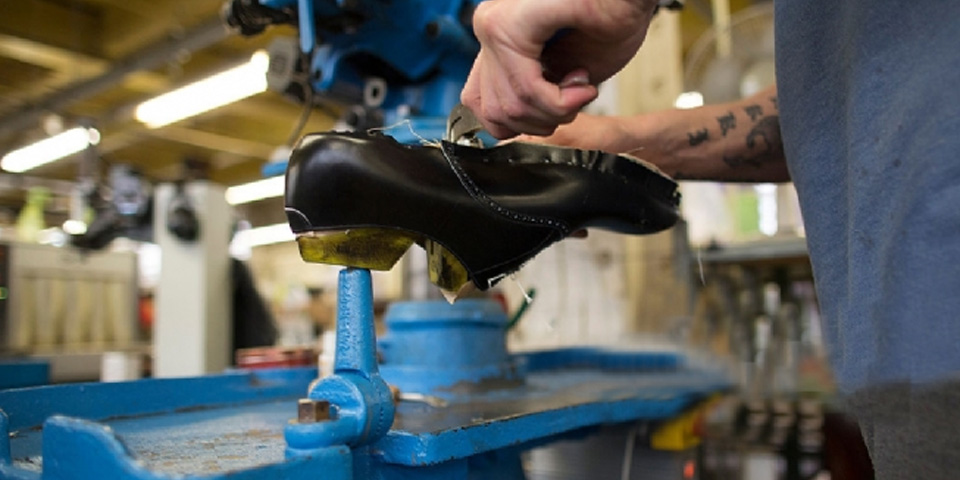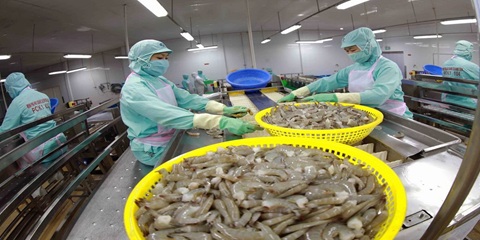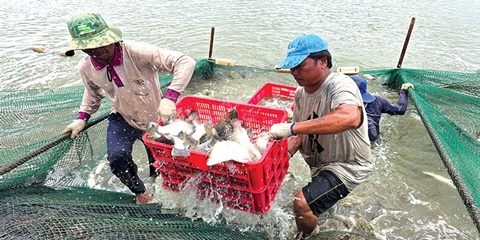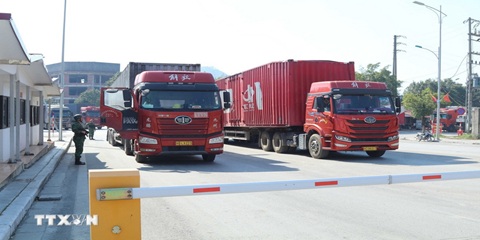Want to be in the loop?
subscribe to
our notification
Business News
GARMENT, FOOTWEAR HARD HIT BY PANDEMIC
Right from the middle of the first quarter of 2020, a lot of major importers postponed and canceled orders, causing most domestic exporters to moderate production or even temporarily halt production.

Double hardship
According to the General Department of Vietnam Customs, in the first three months of the year, leather-footwear exports all declined. Specifically, footwear fell by 1.9% as compared with a 14% growth in the corresponding period of 2019. The export of bags, suitcases, hats and umbrellas slipped 5.5%, compared to a growth of 10.2% a year earlier.
According to data from the General Statistics Office, textile and apparel export turnover in the first three months of 2020 recorded a marked decline. Specifically, the export turnover of the first quarter of 2020 reached nearly US$6.5 billion, down 9% over the same period. In March 2020 alone, textile and apparel export turnover is estimated at US$1.8 billion, down by 29%.
Notably, input imports for garment-textile and leather-footwear sectors slumped significantly. The import value sank 12%, equivalent to US$270 million, from the same period of 2019. Specifically, imported inputs for garment-textile and footwear valued US$967.3 million, down nearly 8%. Cotton import reached US$494 million, down about 15%. Yarn imports reached US$423.8 million, down about 6%.
Imports from China totaled US$1.24 billion, down 16.72%; S$389 million from South Korea, down 11.9%; and US$287 million from the United States, down nearly 4%. Therefore, many manufacturers lacked raw materials to make and deliver products in time to partners.
Exporters are forecast to face double difficulties due to rising raw material prices in absence of new input supply, and declining market demand as a result of the epidemic in many countries.
In March 2020, the European Union (EU) announced to stop importing goods in one month and the United States stopped importing commodities in 21 days. These two major markets account for over 50% of Vietnam’s apparel and footwear export value. The Ministry of Industry and Trade estimated garment and footwear orders for April and May delivery will fall by 70% and new orders for delivery from June on will not be negotiated. Order recovery is forecast to be slow towards the end of 2020.
Facing this reality, Ms. Phan Thi Thanh Xuan, General Secretary of the Vietnam Leather, Footwear and Handbag Association (Lefaso), feared that market shocks were much more severe than input shocks. This has affected revenue of companies and employment and income of workers.
Mr. Le Tien Truong, General Director of Vietnam National Textile and Garment Group (Vinatex), said many companies affiliated to Vinatex will be underemployed in April and May 2020 due to cancelled orders. Assuming that the Covid-19 pandemic ends in late May and the economy recovers from June 2020, Vinatex will lose about VND1 trillion.
Assuming that customers cancel 20% of orders, the textile and apparel industry will have a backlog of US$300 million of materials imported but not used, thus adding more hardship and loss for producers, he forecasts.
Experts fear that the low market demand may lead to a sharp drop of global prices by up to 20%, fueling pressures, both on finance and employment, for Vietnamese garment and textile companies in the future.
Recovery efforts
On the business side, Vinatex introduced a solution for its member units to actively search for export orders for anti-epidemic products such as face masks, antibacterial medical clothing, and disposable clothing made from non-woven fabric. They will also negotiate with their employees to apply flexible working regimes, reduce working hours and alternate working hours to ensure production, employment and income for laborers in the spirit of sharing hardships together.
Unlike other export industries, the shift to e-commerce channels or to the domestic market is unlikely effective for apparel and footwear companies because most producers are making export products for foreign brands, which models and materials fit foreigner tastes, not domestic consumer tastes.
A lot of useful business support policies have been introduced, like delaying the time of paying union dues or not conducting mass inspection in social insurance in 2020.
Regarding support policies, the Prime Minister issued Directive 11 on urgent tasks and solutions to cope with business difficulties and ensure social security in response to Covid-19. In particular, the credit support package of about VND250 trillion launched by banks offer new customers loans with an interest rate 0.5-1.5% lower than the normal rate of the same maturity terms. Interest rates were slashed. The ceiling interest rate for short-term dong loans decreased to 5.5% per annum, the refinancing rate slipped to 5% and the re-discount rate was cut to only 3.5%.
In order to balance the budget revenue to ensure the execution of the above-mentioned support solutions, the Ministry of Industry and Trade recommended that the Government direct central and local agencies to accelerate the equitization and divestment of state capital in state-owned enterprises to increase state budget revenue, while saving regular expenditures to reserve resources for business support.
Regarding export markets, the EU - Vietnam Free Trade Agreement (EVFTA), expected to take effect in July, is also hoped to become an “expressway” for leather-footwear and garment-textile products to reach the European market. If the EU can control the Covid-19 epidemic in the second quarter to restore manufacturing in the third and fourth quarters, EVFTA will be a broad exit to save Vietnamese exporters.
Source: VCCI
Related News

VIETNAM’S SEAFOOD EXPORTS HIT OVER US$10 BILLION IN JAN-NOV
Seafood export revenue in November alone amounted to nearly US$990 million, up 6.6% year-on-year. Key product groups posted solid gains. Shrimp exports rose 11.7% to over US$385 million, supported by strong demand for whiteleg shrimp and lobster. Tra fish shipments increased 9.7% to almost US$197 million, while marine fish, squid, and mollusk exports maintained their recovery.

VIETNAM’S AGRO-FORESTRY-FISHERY EXPORTS HIT NEW RECORD IN JAN-NOV
Vietnam’s agro-forestry-fishery export revenue reached an estimated US$64.01 billion in the first 11 months of 2025, up 12.6% year-on-year and surpassing the full-year record of US$62.4 billion set in 2024. Agricultural exports reached US$34.24 billion, up 15% year-on-year, while livestock products brought in US$567.4 million, a 16.8% increase. Seafood exports rose 13.2% to US$10.38 billion, and forestry products earned US$16.61 billion, up 5.9%.

HANOI REPORTS RECORD-HIGH BUDGET REVENUE IN 2025
Hanoi’s budget revenue is estimated to reach VND641.7 trillion in 2025, the highest level ever recorded and nearly 25% above the revised target, according to a report by the municipal government. Data from the city’s socioeconomic performance review shows that total state budget collections in 2025 are projected to reach 124.9% of the adjusted plan and rise 24.9% from 2024, the Vietnam News Agency reported.

VIETNAM, CHINA TO PILOT TWO-WAY CARGO TRANSPORT AT LANG SON BORDER
Vietnam and China will launch a one-year pilot program on December 10 to allow two-way cargo transport through the Huu Nghi–Youyi Guan international border gates in Lang Son Province, reported the Vietnam News Agency. The Dong Dang-Lang Son Economic Zone Management Board said the trial aims to reduce transport costs and improve customs clearance capacity.

VIETNAM’S IMPORT-EXPORT VALUE NEARS US$840 BILLION IN JAN-NOV
The total value of Vietnam’s imports and exports was nearly US$840 billion between January and November this year, the highest level ever recorded, according to the National Statistics Office. In its latest report on the country’s socio-economic performance, the National Statistics Office highlighted a series of positive economic indicators, with trade emerging as one of the strongest drivers of growth.

OVER 19 MILLION INTERNATIONAL VISITORS COME TO VIETNAM IN JAN-NOV
Vietnam received more than 19.1 million international visitors in the first 11 months of 2025, a 20.9% increase year-on-year and the highest level ever recorded, according to the National Statistics Office. The figure surpasses the full-year record of 18 million arrivals set in 2019, before the Covid-19 pandemic. Nearly two million foreign visitors arrived in November alone, up 14.2% from October and 15.6% from the same period last year.
























